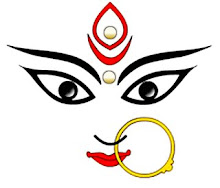Om Swamiye! Saranam Ayyappa! Om Hariha Sudhane! Saranam Ayyappa! Om Annadhana Prabhuve! Saranam Ayyappa! Om Dharma Saasthave! Saranam Ayyappa!
 |
| Swamy Ayyappa Temple, Sabarimala, Kerala |
Sabarimala Ayyappa Temple is a renowned pilgrim centre atop the rugged hills of the Western Ghats. This holy shrine is dedicated to Lord Ayyappa, situated in middle of the Reserve Forest area in Perinad village, Ranni Taluk, Pathanamthitta District, Kerala. Ayyappa temple is surrounded by valley with a green forest hills. Sabarimala is named after Shabari. For Shabari’s devotion and faith during her penance, Lord Rama who accepted her wish. Sabarimala is about 4135 feet above sea level is thronged by millions of devotees with prayers and chanting Ayyappa name with high volume. The pilgrimage to Sabarimala Sri Dharmasasta Temple is most famous and prominent among all the Sastha Temples. This temple stands as an example for communal harmony.
 |
| Dharmasasta |
Ayyappa devotees believed that “Parasurama Maharshi” from sea, troughed his axe, than the idol of Ayyappa was installed at Sabarimala. The devotees not only from southern India and also from different parts of the country and abroad visit here in the months of November and at the end of January. Temple is opens to people of all faiths and different non-hindus pilgrimages to this temple. The existence of the “Vavar Nada” is honor of a Muslim saint is near to the main Ayyappa Swamy temple by the side of Holy Pathinettampady at Sabarimala. Pilgrims also offer prayers in the mosque at Vermeil. An significant aspect in Ayyappa pilgrimage is addressing each other as AYYAPPA whether rich or poor, learned or illiterate, master or servant are all equal before LORD AYYAPPA.
 |
| Pilgrims at the Pamba River |
 |
| Irumudi Kattu |
| SANNIDHANAM |
The layout of the Ayyappa temple is believed to have originated from the specific instructions of the Lord himself, who wanted Malikappurathamma, on his left a few yards from Sannidhanam,
 and his trusted lieutenants Vavur and Kadutha to be positioned as his guards at the foot of the holy 18 steps. The pilgrims worship in this place also. This exemplifies the unique feature of the temple. The temple is open to all faiths. The divine qualities like equality, fraternity, tolerance, humanity etc.. are shining well in the pilgrims. and his trusted lieutenants Vavur and Kadutha to be positioned as his guards at the foot of the holy 18 steps. The pilgrims worship in this place also. This exemplifies the unique feature of the temple. The temple is open to all faiths. The divine qualities like equality, fraternity, tolerance, humanity etc.. are shining well in the pilgrims.
Ayyappa cult gives much importance for the secularism and communal harmony and has turned out to be a model for the whole world. Another significant aspect of the pilgrimage is that all the pilgrims whether rich or poor, learned or illiterate holding position or not master or servant are all equal before LORD AYYAPPA and all address each other as AYYAPPA.
The pilgrims on their sojourn to Sabarimala worship at Erumeli Sree Dharma Sastha Temple and conduct "Petta Thullal". They also worship in the mosque at Erumeli as a part of their pilgrimage.
According to legend, the temple of Sabarimala and the deity of Ayyappa have always been regarded as the Pandalam Raja's very own. So permission from the King has to be attained before proceeding to the temple. To make it easy for pilgrims to obtain the necessary permission, a representative of the king sits with all the royal insignia, on a raised platform at the base of the Neelimala Hill. The pilgrims offer a token amount (not necessary) to the royal representative, and receive vibhuti from him.
This marks the beginning of the steepest climb of the pilgrimage, the 3 km trek up the majestic Neelimala Hill, atop which sits Lord Ayyappa in all his glory. The pilgrims wind their way up the difficult trail in an unending stream, the hill reverberating with the constant chanting of thousands.
At the first sight of the Patinettampadi, the holy eighteen steps, a full throated cry goes up from the devotees, "Swamiye Saranam Ayyappa!" It is the realisation of a mission.
The shrine of Lord Ganapati: To the south-west of the main temple is the shrine of Lord Ganapati, known as Kannimula Ganapati. The special offering to this deity is Ganapati homan.
Homakunda: There used to be a large homakunda in front of the shrine, which burned constantly, fed by the coconut shells thrown by the devotees, after offering the ghee. As the coconut shells gets consumed by the fire, the sins of the devotees are believed to be cleansed. Due to the growing crowds in the temple, the homakunda has now been shifted to a location below the temple.
 Bhasma Kulam: About a 100 metres away is the shrine of Malikappurathamma. En route to the shrine is the temple tank, Bhasma Kulam, in which hundreds of devotees take a holy bath in memory of the tapaswini Sabari who entered a fire to end her mortal life. It is after her that the peak is named Sabarimala.On account of the number of people who bathe in the tank, the water is frequently drained out and refilled with fresh water. Bhasma Kulam: About a 100 metres away is the shrine of Malikappurathamma. En route to the shrine is the temple tank, Bhasma Kulam, in which hundreds of devotees take a holy bath in memory of the tapaswini Sabari who entered a fire to end her mortal life. It is after her that the peak is named Sabarimala.On account of the number of people who bathe in the tank, the water is frequently drained out and refilled with fresh water.
Malikappurathamma: Situated on a small hillock, the Malikappurathamma temple houses the shrines of the Devi and Kaduthaswamy. Devotees also worship a trident and lamp here, and offer coconuts. The coconuts are not broken, however, but are just rolled on the ground .
To the left of this temple are the shrines of the snake god and goddess, Nagaraja and Nagayakshi. Here, tribals beat on drums, play stringed instruments and sing sarppa pattu to protect devotees and their progeny from the harmful effects of snakebites.
Shrines of Kaduthaswamy and Karuppaswamy: At the foot of the Patinettampadi are the two shrines of Kaduthaswamy and Karuppaswamy, who stand like dwarapalakas or guardians of the holy steps, to ensure that they are not polluted by those who tread on them without fulfilling the rigid austerities required of them. They are also believed to protect the devotees from the evil spirits of the forests.
According to legend, Kadutha was a great warrior who helped the Pandalam king defeat the armies of Udayanan and other enemies. When the king came to Sabarimalai to reconstruct the temple, Kadutha came with him to protect him. Ultimately, he became so attached to Ayyappa that he decided to spend the rest of his days with his Lord.
Also near the Patinettampadi is the shrine of the Muslim Vavurswami. While there are several accounts of identity of Vavur, it is generally believed that he was a warrior who was defeated and subdued by Ayyappa, and later became a close associate. It is believed that Lord Ayyappa himself instructed the Pandalam king to build a mosque for Vavur at Erumeli and a shrine at Sabarimalai.
|
Renovations Done:
Golden 18 Steps:
Several myths persist regarding the significance of the Pathinettu thripadikal or the 18 holy steps, but almost all of them stress the importance of the number, 18. According to a popular belief, the first 5 steps signify the five indriyas or the senses [eyes, ears, nose, tongue and skin], the following 8 the ragas [tatwa, kama, krodha, moha, lobha, madha, matsraya, and ahamkara], the next 3 the gunas [satwa, rajas and thamas] followed by vidya and avidya. Climbing these would take the devotee closer to self-realisation. The act of crossing the 18 steps is so sacred that nobody can mount them without undertaking the rigorous 41 day fast and carrying the irumudi. It is also widely assumed that the pathinettu padikal symbolize the 18 puranas; others believe that they connote the 18 weapons with which Lord Ayyappan obliterated evil. An Ayyappa devotee crosses the Pathinettaam padi only twice during his sojourn on Sabarimala - for entering the temple and to go downhill. Before ascending or descending the steps, pilgrims break coconut as an offering to the steps. One needs to have the sacred Irumudi on head while going up or down the 18 steps and while descending the steps the devotees climb down backwards facing the sanctum sanctorum. |
| MAKARAJYOTHI |
 The most important event at Sabarimala is the Makara Jyothi [usually on January 14th]. Thiruvabharanam or the sacred jewels of the Lord [presented by the Pandalam king] arrives at Sabarimala in three boxes. On the arrival of the jewel boxes the whole mountain reverberates to the chanting of 'Saranam Ayyappa' by millions of devotees gathered there to watch the event. The most important event at Sabarimala is the Makara Jyothi [usually on January 14th]. Thiruvabharanam or the sacred jewels of the Lord [presented by the Pandalam king] arrives at Sabarimala in three boxes. On the arrival of the jewel boxes the whole mountain reverberates to the chanting of 'Saranam Ayyappa' by millions of devotees gathered there to watch the event.
The Thiruvabharanam box - still the private property of the Pandalam royal family, starts its journey two days before Makara Jyothi day from Pandalam. The person who carries the box dances in a peculiar trance. Thiruvabharanam travels through Valiakoikkal Sastha temple at Pandalam, Ayiroor Puthia Kavu Temple, Perunattil temple, Vlakkai, Nilaikkal Siva temple, Vellachimala, Pamba and Sabari Peedam before reaching at Sannidhanam around 6.00 PM on the Makara Jyothi day. Every year a Garuda hovers and flies above the Thiruvabharanam boxes as if to guard them.
Even some who leave Sabarimala after witnessing the Jothi observe fasting till the Makara Villaku and Kuruthi pooja is complete at Sabarimala.
|










































